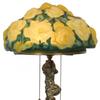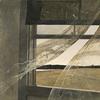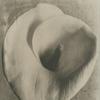3 Stunning Works to See in Traveling Georgia O'Keeffe Exhibition Now at Cleveland Museum of Art
- CLEVELAND, Ohio
- /
- November 26, 2018
Organized by the Brooklyn Museum, this popular exhibition explores Georgia O’Keeffe’s modernist aesthetic through art, clothing, and photographs
Georgia O’Keeffe: Living Modern offers a unique look into the fascinating connections among the paintings, personal style, and public persona of one of America’s most celebrated artists. Throughout her 65-year career, O’Keeffe defied convention and forged a fiercely independent identity that was integral to her art. Showcasing approximately 140 objects, including paintings, drawings, and sculptures alongside her garments (many shown for the first time) and photographic portraits of her, the exhibition reveals O’Keeffe’s determination to be strikingly modern in both her art and her life. Organized by the Brooklyn Museum, Georgia O’Keeffe: Living Modern is on view in the Kelvin and Eleanor Smith Foundation Exhibition Gallery at Cleveland Museum of Art now until March 3, 2019.
“Georgia O’Keeffe is a beloved icon of 20th-century American art,” said William Griswold, director of the Cleveland Museum of Art. “The exhibition offers an intriguing look at how O’Keeffe shaped the world’s perception of her identity, artistic values, and style.”
Rejecting the restrained Victorian world into which she was born, O’Keeffe absorbed the progressive principles of the Arts and Crafts movement, which promoted the idea that everything a person made or lived with should reflect a unified, visually pleasing aesthetic.
“Throughout the exhibition, we discover an artist who drew no boundaries between the art she made and the life she lived,” said Mark Cole, curator of American painting and sculpture. “Elegant simplicity is a hallmark of O’Keeffe’s streamlined style, manifesting itself through every object in Living Modern.”
Georgia O’Keeffe: Living Modern is organized in sections that chart a chronology of O’Keeffe’s career. One large section is devoted to her early decades as a young artist in New York, specifically the 1920s and ’30s. At this time O’Keeffe honed a restrained palette of black and white, and a plain, relatively unornamented style that dominated much of her art and wardrobe.
The exhibition’s next section is devoted to O’Keeffe’s mature career in New Mexico, where her art and clothing changed in response to the surrounding colors of the American Southwest. She began wearing blue jeans, which she proclaimed to be America’s national costume, and coupled them with long-sleeved cotton men’s-styled shirts. At this time, she routinely introduced color into her clothing, mostly blue, occasionally red—the palette of her wardrobe mirroring her New Mexico canvases.
Another section of the exhibition addresses O’Keeffe’s appreciation of Asian cultures. She professed an interest in Chinese and Japanese painting as early as the 1920s and amassed an extensive library of books devoted to both. In 1959 she was finally able to travel to Asia, where she augmented what would become a collection of nearly two dozen kimonos, some of which she wore for bed and bath.
The final section explores the significant role photography played in establishing O’Keeffe’s late-career celebrity. Some 50 photographers asked her to pose over her lifetime, solidifying her status as a pioneer of modernism and promoting her as an iconic artist with style. For the camera, O’Keeffe dressed in impeccably tailored black suits by designers such as Balenciaga, embodying a toughness, austerity, and individualism befitting someone who had lived life on her own terms.
Writing about why she painted flowers in large scale, O’Keeffe explained, “—in a way—nobody sees a flower—really—it is so small—we haven’t time. . . . So I said to myself—I’ll paint what I see—what the flower is to me but I’ll paint it big and they will be surprised into taking time to look at it.”
The decoration at the neckline of the blouse shown here recalls O’Keeffe’s paintings of crinkled autumn leaves and corrugated seashells. The blouse and the ornament are shaped by tiny pin tucks—each done by hand-- that look like the veins of a leaf.
O’Keeffe’s love of color in nature found its match in the Southwest, and she explored its hues avidly in her paintings and, more modestly, in her wardrobe. Describing her palette in New Mexico, O’Keeffe explained, “All the earth colors of the painter’s palette are out there in the many miles of badlands. The light Naples yellow through the ochres—orange and red and purple earth—even the soft earth greens.”
Published by the Brooklyn Museum, Georgia O’Keeffe: Living Modern explores how Georgia O’Keeffe lived her life steeped in modernism, bringing the same style she developed in her art to her dress, her homes, and her lifestyle. Richly illustrated with images of her art and views of the two homes she designed and furnished in New Mexico, the book also includes never before published photographs of O’Keeffe’s clothes. Author and exhibition curator Wanda M. Corn has attributed some of the most exquisite of these garments to O’Keeffe, a skilled seamstress who understood fabric and design, and who has become an icon in today’s fashion world as much for her personal style as for her art.









100x100_c.jpg)



